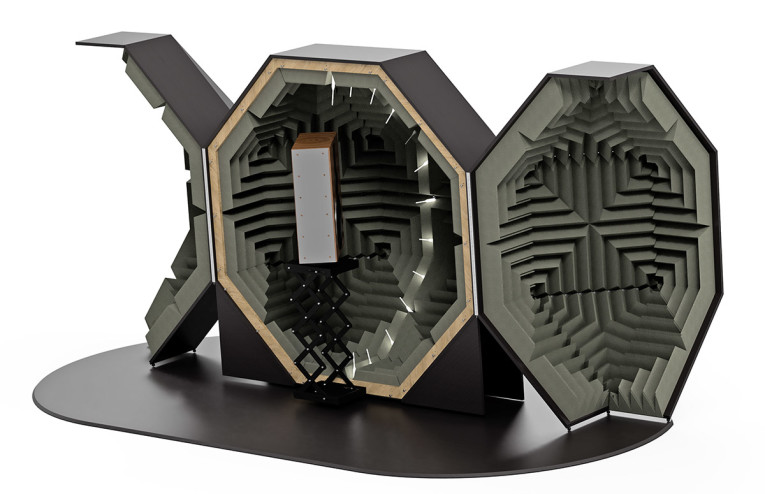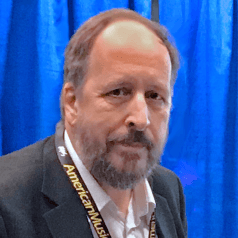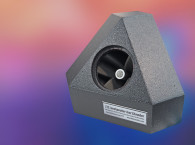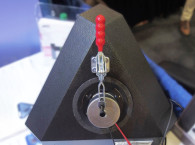A constant question that we are asked is why? Why should I or we in the case of a company invest in an acoustic measurement chamber? The principles of acoustics are simple enough, we have electronics, and PCBs, and software engineers, and have designed our product(s) varied though they are.
Yes absolutely, but does the COMPANY have the in-house expertise to measure a product reliably and consistently from R&D to a production environment?

In truth all companies struggle to find the people to handle the acoustical design work, let alone acoustical measurements. All companies can really find are recommendations to use an anechoic environment! If you did look at the costs of an anechoic chamber you have already realized that it starts in the hundreds of thousands of dollars, as well as taking a lot of space and time.
Well, that is a fairly typical scenario for a lot of companies, most of the time, they are really busy designing their new product or idea, and they just do not have the personnel with the experience or an ongoing need to develop in-house capability. Either that or they had that capability in the past, but people leave or retire and they muddle along with what they have, after all, “If it is not broken don’t fix it.” But this is not necessarily the best way forward.
But for a new company, business, or product line what then? Does it make business sense to develop such capacity? Do you really have the time or resources available to invest in this area as well as your main tasks?
In my business at Hill Acoustics, we have expertise in this niche area, and we can provide in-depth skill, experience, and proven capabilities. We have published results demonstrating our competence, in line with internationally recognized IEC, AES, and relevant standards. We can provide complete test solutions to get you the results you need without you investing the time and resources that would be required to do this yourself.
Meeting New Needs
A while ago Hill Acoustics was approached by a company, with an interesting problem. To accurately acquire measurements from a device that had an array of microphones to detect music coming from various angles of incidence and needed to operate over the full audio frequency range. Having seen Hill Acoustics' Tetrahedral Test Chambers and the results they could deliver, could Hill Acoustics help with this challenge?
A key issue was securing consistent, accurate, and reliable results. Reliable and repeatable results were essential to set up the design initially and would be vital later on in production. The company needed help to test their device and needed to be able to test the product with sound coming from multiple angles of incidence alongside the ability to rotate it!
A design was proposed based upon a standard Polar Test Chamber (PTC) as it was essential to be able to create sounds that could come toward the device from a range of physical positions as well as different angles of incidence. The design of a PTC can easily incorporate a turntable.

A PTC could do this as it is capable of full spherical measurements, so in this case we turned one on its side and used just one half so that a hemisphere was measured by a series of microphones as recommended in AES56. The microphones were in practice replaced by a series of individual loudspeaker modules each point the sound downward at 15-degree intervals in an arc above the device under test (DUT), which was set on a turntable to allow for full rotation of the device. The project required multiple noise sources at the same time as the music, being able to simulate other sounds that would enter the device from multiple different angles.

The speakers at fixed angles were aligned toward the center of the turntable and remained in fixed positions in an arc around the top of the chamber, while the turntable allows the user to index the positions by using the thumb wheel in 15-degree intervals throughout a full 360 degrees.
This chamber was also fitted with a bank of four amplifiers, each with four inputs and two volume controls to be able to adjust all the levels independently to allow for up to 16 independent sound sources or signals to test what the DUT is picking up.
This combination supplied all the company's needs and has been successfully used for 18 months with no issues. Furthermore, the solution is now being utilized on their production line - another advantage of using a compact, portable test chamber.

This is just one example of the type of challenge where outsourcing resulted in a solution that worked without the need to devote significant resources to the problems inherent in acoustic measurement.
I have written extensively about the story of the Tetrahedral Test Chamber and its benefits for consistent loudspeaker measurements. You can read that story in this article here and here.
Our company has extensive experience in providing custom test chambers of any size, but I believe some more detail should be offered about the Polar test chambers, also available in three standard sizes and which are an essential solution for accurate and repeatable polar measurements of loudspeakers, smart speakers, soundbars, and active systems.

Polar Test Chambers (PTC)
According to Audio Engineering Standard – AES56-2008 reaffirmed in 2019, loudspeaker polar radiation measurements fall into two distinct categories: Type A Measurements and Type B Measurements.
High precision measurements for detailed analysis of a generally shaped loudspeaker (basically a loudspeaker with no physical or acoustical symmetry), which are designated as Type A Measurements. Type A requires measurements to be taken at angular values of Φ = 0 °and ϴ = 0° in 5° increments in both X and Y planes to cover a half plane. This creates a 2x2 matrix in Φ and ϴ, requiring 37 rows and 72 columns or 2664 individual measurements. There is a bit of redundancy of 142 duplicated measurements, still it is a massive task and not something suited to being done many times due to the laborious nature of such tests!
Fortunately, there is an alternative. Type B measurements take advantage of the fact that many practical loudspeakers include significant physical and acoustical design symmetry, so a lower resolution is still capable of providing sufficient information from fewer measurements. Type B requires measurements to be taken at angular values of Φ = 0 °and ϴ = 0° in 15° increments in both X and Y Planes to cover a half plane. This creates a 2x2 matrix in Φ and ϴ, requiring 13 rows and 13 columns or 169 individual measurements. Obviously, this will be considerably quicker to achieve.
Hill Acoustics developed the PTC around the concept of making best use of the AES 56:2008 standard. However, instead of using a single microphone and moving the loudspeaker in X and Y planes or the microphone around the loudspeaker, we chose to enclose the loudspeaker - whether a system or a drive unit - with a semi-circular array of 13 microphones, or a second array if so desired, all permanently mounted to the inside of the PTC.
By simply selecting or switching each microphone in sequence we can quickly measure over a quarter, half, or even a full spherical volume by using a simple turntable.
Standard models of TTCs and PTCs are available commercially through Spectral Measurement (formerly the Test & Measurement division of Prism Sound), which signed a licensing deal with Hill Acoustics enabling it to manufacture the chambers. If you or your company have an acoustic measurement problem, why not reach out to Geoff or Graham to see if we can help? Email Geoff Hill or Graham Boswell.
www.spectralmeasurement.com
www.hillacoustics.com
This article was originally published in The Audio Voice newsletter, (#415), March 23, 2023.
 About the Author
About the Author
Geoff Hill, inventor of the Tetrahedral Test Chamber (TTC) and CTO at Hill Acoustics, has been working in the loudspeaker and audio industry for more than 40 years. He is Chair of the AES SC-04-03 Working Group on loudspeaker modeling and measurement and a member on the IEC Working Group TC 100/TA 20/PT 60268-22. He is also the author of Loudspeaker Modelling: A Practical Introduction (Focal Press). Geoff welcomes your comments and can be contacted via email.






